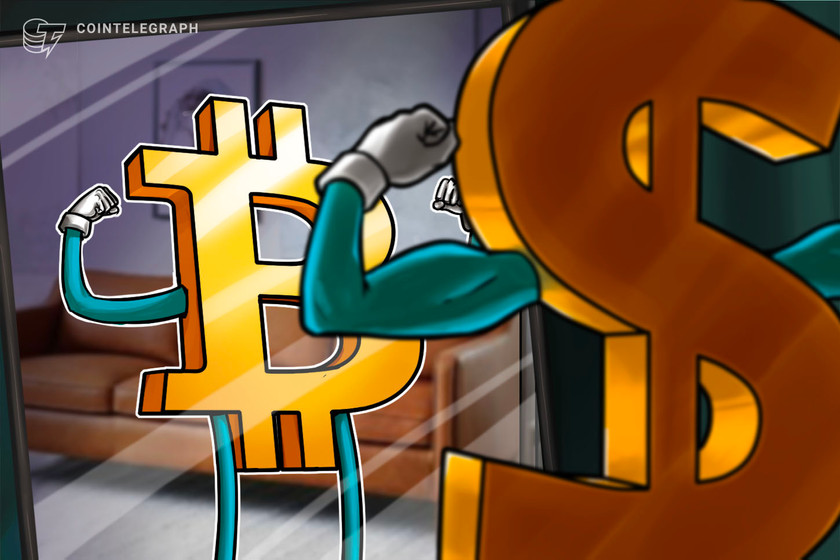
GMT is booming amid warnings that its 38,000% price rally since inception could end up being an "absolute joke."
STEPN (GMT) has rallied strongly against the U.S. dollar this week as it looks likely to form a classical bullish technical pattern called the "bull flag."
GMT eyes more upside
GMT's price rose 30% week-to-date, including a strong rally to establish an all-time high near $3.85 followed by a relatively modest correction to nearly $3. In particular, the correction phase occurred inside a descending parallel channel, raising possibilities that the price would eventually break out of it to the upside.
That is precisely because traditional analysts consider strong run-ups, followed by range-trapped price corrections, as bullish continuation setups. And the one GMT has been painting — a bull flag, as mentioned above — could lead to an upside boom in the weeks ahead, as shown in the chart below.

As a general rule, traders realize a bull flag target by measuring the previous uptrend's height and projecting it from the breakout point. Applying the classic setup on GMT's chart shows that it now eyes a run-up above $5, about 65% above today's price.
Bull flags' success rate of meeting their upside targets sits near 64%, according to Thomas Bulkowski, a veteran investor and analyst.
But the risk of a drop toward $2 becomes high if the GMT's price breaks below the bull flag's lower trendline, the last line of support, which coincides with the 50-4H exponential moving average (50-4H EMA; the red wave) at $2.91.
STEPN's 38,000% gains 'an absolute joke'?
GMT surged by nearly 38,000% in less than two months, amid the hype surrounding STEPN's "move-to-earn" economic model that rewards its app's users with a native currency, called Green Satoshi Token (GST), for merely moving.
STEPN generates revenues (it made $26.81 million in Q1/2022) via the sales of its so-called "NFT Sneaker" — a unique digital image whose ownership enables players to earn GST in the first place. The game uses the proceeds first to buy and then burn GMT, thus creating upward pressure on its prices if the demand for the token goes up.
Independent market analyst Wangarian believes the hype around STEPN looks similar to what Axie Infinity (AXS), a play-to-earn gaming metaverse, witnessed in May 2021. AXS/USD rallied from around $2.50 to about $178 between May and November last year.
Tell me how $APE + $GMT ripping in a sideways market doesn't look similar to $AXS back in May 2021.
— Wangarian (@0xWangarian) April 21, 2022
Fellow independent market analyst Michaël van de Poppe, however, fears that GMT's market capitalization, which sits near $1.9 billion — with a fully diluted valuation of around $18 billion — is an "absolute joke."
But GMT "valuations can still become ridiculous," he adds, owing to STEPN's marketing tactics.
The views and opinions expressed here are solely those of the author and do not necessarily reflect the views of Cointelegraph.com. Every investment and trading move involves risk, you should conduct your own research when making a decision.





























 " title="
" title="





